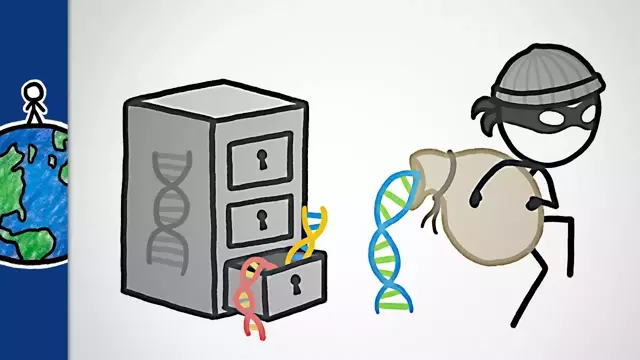2018-02-20
[public] 523K views, 11.6K likes, dislikes audio only
Try Dashlane here: http://bit.ly/minutedash. Plus, here’s a 10% off promo code for Dashlane Premium: youtube2018
Thanks also to our Patreon patrons https://www.patreon.com/MinuteEarth and our YouTube sponsors.
Once it’s out of your body, your genetic information is valuable to a variety of people, but you can keep it safe(ish) with a few simple steps.
___________________________________________
To learn more, start your googling with these keywords:
Personal Genetic Analysis: Direct-to-consumer DNA testing, usually through mail-in saliva samples.
Single Nucleotide Polymorphism: A variation at a single spot on the genome that is present in some part of the population.
Genotyping chip: A microarray that allows genetic testing companies to test a DNA sample for hundreds of thousands of single nucleotide polymorphisms.
Health Care Fraud: A crime that usually involves misrepresenting medical information in order to make money.
Targeted Advertising: The practice of placing ads based on consumer demographics or behavior.
Genetic Information Nondiscrimination Act: A 2008 American law that prohibits health insurers and employers from using genetic information when making coverage or hiring decisions.
___________________________________________
Subscribe to MinuteEarth on YouTube: http://goo.gl/EpIDGd
Support us on Patreon: https://goo.gl/ZVgLQZ
And visit our website: https://www.minuteearth.com/
Say hello on Facebook: http://goo.gl/FpAvo6
And Twitter: http://goo.gl/Y1aWVC
And download our videos on itunes: https://goo.gl/sfwS6n
___________________________________________
Credits (and Twitter handles):
Script Writer: David Goldenberg (@dgoldenberg)
Script Editor: Emily Elert (@eelert)
Video Illustrator: Jesse Agar
Video Director: Emily Elert (@eelert)
Video Narrator: Kate Yoshida (@KateYoshida)
With Contributions From: Henry Reich, Alex Reich, Ever Salazar, Peter Reich
Music by: Nathaniel Schroeder: http://www.soundcloud.com/drschroeder
___________________________________________
References:
Melissa Gymrek, Amy L. McGuire, David Golan, Eran Halperin, Yaniv Erlich (2013). Identifying Personal Genomes by Surname Inference. Science. 339:6117 (321-324). Retrieved from: http://science.sciencemag.org/content/339/6117/321.full
Joh, E. (2011). DNA Theft: Recognizing the Crime of Nonconsensual Genetic Collection and Testing. Boston University Law Review. 91:2 (666-700) Retrieved from: https://www.bu.edu/law/journals-archive/bulr/documents/joh.pdf
Tanner, A. (2017). Our Bodies, Our Data: How Companies Make Billions Selling Our Medical Records. Available at: https://www.amazon.com/gp/search?index=books&linkCode=qs&keywords=9780807033340
Koerner, B. (2015). Your Relative’s DNA Could Turn You Into A Suspect. Wired. Retrieved from: https://www.wired.com/2015/10/familial-dna-evidence-turns-innocent-people-into-crime-suspects/
Pollack, A. (2015). Building a Face, and a Case, on DNA. New Yourk Times. Retrieved from: https://www.nytimes.com/2015/02/24/science/building-face-and-a-case-on-dna.html?_r=0
Cappos, Justin. (2017). Professor of Computer Science and Engineering, NYU. Personal Communication.
/youtube/video/IbY122CSC5w
/youtube/video/PCTVL5oKlik
http://patreon.com/minuteearth
/youtube/channel/UCeiYXex_fwgYDonaTcSIk6w
https://www.patreon.com/minuteearth
/youtube/video/4DF94Wvtekk

